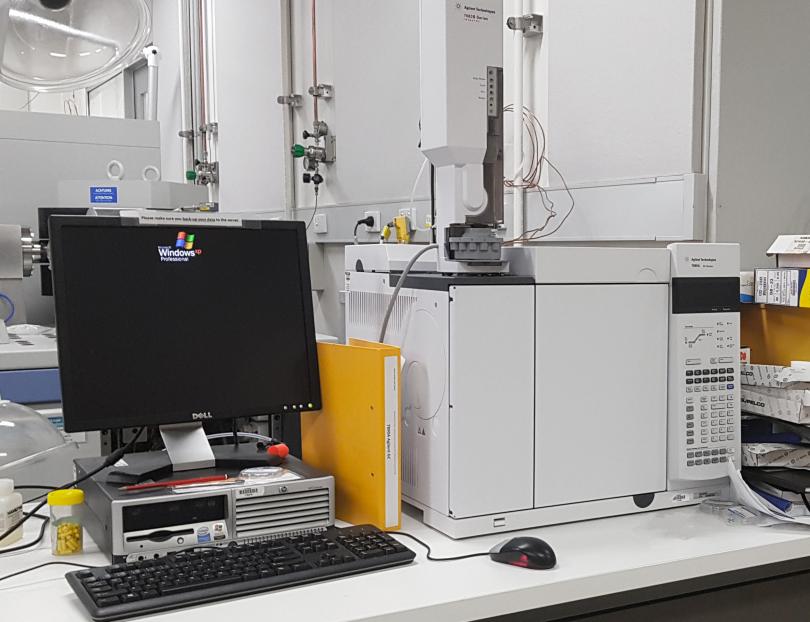
The Agilent 7890 is one of the high-performance gas chromatographs that provide superior performance for all applications. The key to its performance is the use of advanced EPC (electronic pneumatic control) modules and high-performance GC oven temperature control which allows for fast and precise temperature ramping. These specifications provide optimal chromatography including peak symmetry, repeatability of retention time and accuracy in retention time index. Agilent 7890A is expected to have retention time repeatability <0.008% or <0.0008min and area repeatability <1%RSD.
The Agilent 7890A is equipped with FID (flame ionization detector) and TCD (thermal conductivity detector) detectors. FIDs are very sensitive to hydrocarbons and other easily flammable compounds but insensitive to H2O, CO2, CS2, SO2, CO, NOx, and noble gases because they are not able to be oxidized/ionized by the flame. Therefore, hydrocarbons can be easily studied even if contaminated or if some air leakage occurs at the time of the injection. The minimum detectable level is less than 1.8gC/s (for tridecane) and linear dynamic range > 107 (±10%) is expected for quantification of most organic compounds by FIDs.
Another available detector on Agilent 7890A is TCD, known as a universal detector. This detector works based on any changes in the thermal conductivity of the column effluent and compares it to a reference flow of carrier gas. All organic and inorganic compounds and permanent gases (argon, oxygen, nitrogen and carbon dioxide) can be detected by this detector. The minimum detectable level of 400pg/ml (for tridecane) with He Carrier gas and linear dynamic range >105 (±5%) is expected for TCDs.







